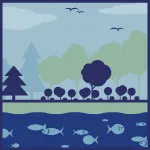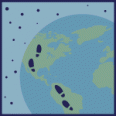Biodiversity Factsheet
Biodiversity, or biological diversity, is the variability among living organisms from all sources, including terrestrial, marine, and other aquatic ecosystems, and the ecological complexes of which they are part.1 Biodiversity shapes the ecosystem services that contribute to human well-being—material welfare, security, resilience, social relations, and health.2 Biodiversity is considered on three levels: species diversity, genetic diversity, and ecosystem diversity.3
Species Diversity
- Species diversity can be measured in several ways, including diversity indices (species richness and evenness), rank abundance diagrams, and similarity indices.4
- Of the estimated 8.7 million eukaryotic species (complex cells) on Earth, 86% of land species and 91% of ocean species have not yet been described.5
- 1.2 million species have been described globally.5
- 55,742 plant and animal species are listed in the U.S.6
- Freshwater habitats account for only 0.01% of the world’s water and make up less than 1% of the planet’s surface, but they support one-third of all described vertebrates and nearly 10% of all known animal species.7
- One study suggests that while tropical reefs have more diverse fish communities, it is polar waters that are hotspots of fish speciation (formation of distinct new species) — contrary to much of the previous thinking about evolution.8
Catalogued Earth and Ocean Species5
Image
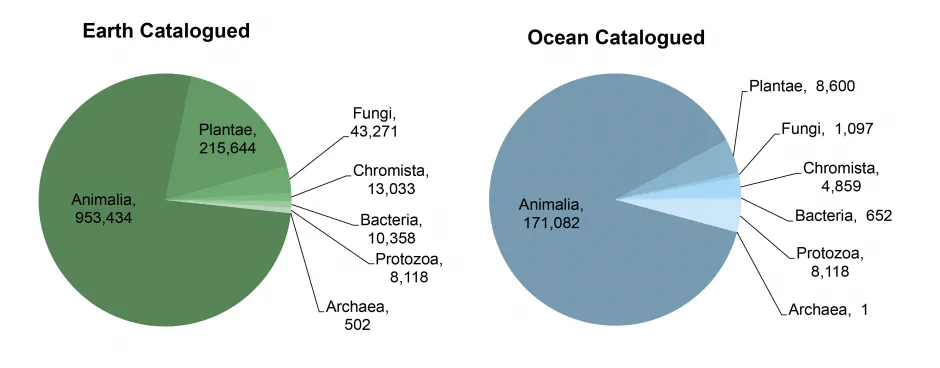
Genetic Diversity
- Genetic diversity refers to the genetic variation within species (for both the same population and populations living in different geographical areas).3
- Individuals within a species have slightly different forms of genes through mutations, where each form (an allele) can code for different proteins and ultimately affect species physiology.3
- Genetic variations lead to differences in both genotype and phenotype, which are necessary for species to maintain reproductive vitality, resistance to disease, and the ability to adapt to changing conditions.3
Community/Ecosystem Diversity
- Ecosystem diversity describes the variety of biological communities and their associations with the ecosystem of which they are part.3
- Within ecosystems, species play different roles and have different requirements for survival (i.e., food, temperature, water, etc.). If any of these requirements become a limiting resource for a species, its population size becomes restricted.3
genotype vs. Phenotype3
Image
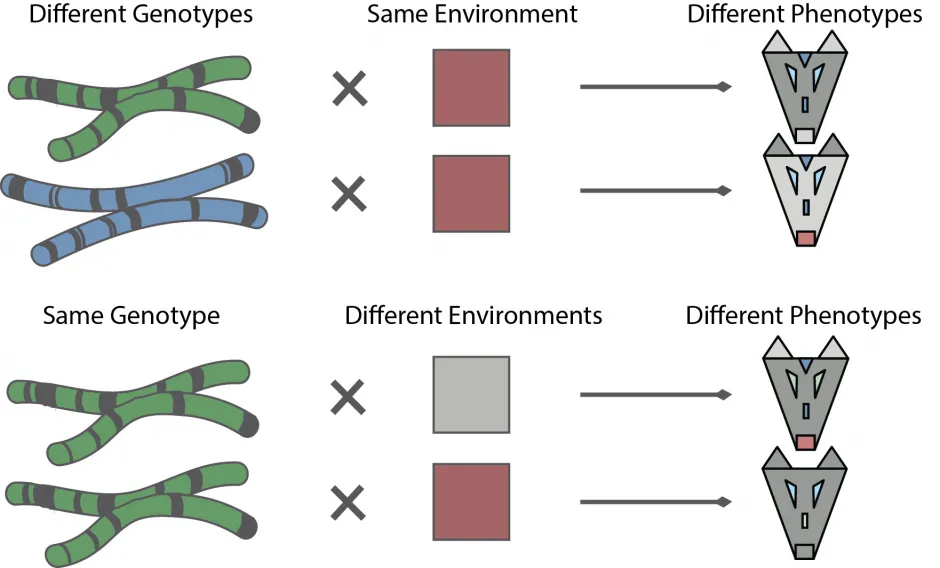
Goods & Services
- Ecosystem services are the conditions and processes that enable natural ecosystems to sustain human life.9
- Ecosystem services include: air and water purification; mitigation of floods and droughts; detoxification and decomposition of wastes; generation and renewal of soil and soil fertility; pollination of crops and natural vegetation; dispersal of seeds and translocation of nutrients; protection from the sun’s harmful ultraviolet rays; partial stabilization of climate; and moderation of temperature extremes and the force of winds and waves.9
- Biodiversity improves several ecosystem services, including crop yields, stability of fishery yields, wood production, fodder yield, resistance to plant invasion, carbon sequestration, soil nutrient mineralization, and soil organic matter.10
- These services provide us with food, natural fibers, timber, biomass fuels, crop pollination, medicines, psychological health, and more.11
Biodiversity, Ecosystem Services, and Human Well-Being2
Image
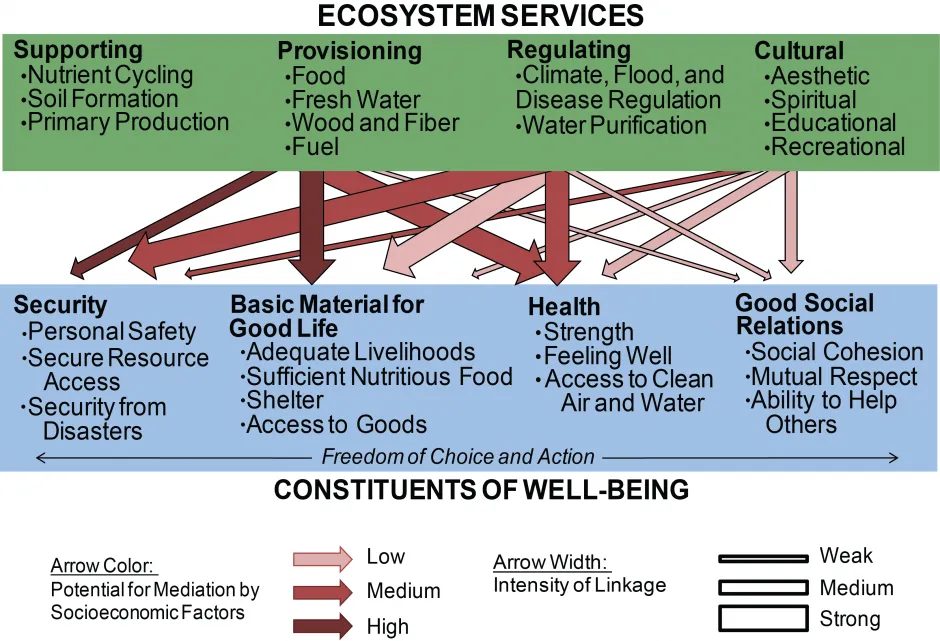
Loss of Biodiversity
- Since 1955, alteration of biodiversity related to human activities was greater than at any time in human history, driven by habitat loss from agriculture and infrastructure, over-exploitation, pollution, invasive species, and climate change.2,11
- Climate change is likely to become the largest threat to biodiversity, in part because it affects areas uninhabited by humans.11 Impacts on some ecosystems are approaching irreversibility; heat extremes and mass mortality events have resulted in the local loss of hundreds of species.14
- Higher temperatures could increase drying, resulting in dieback in the Amazon, which has the highest biodiversity of all forests.15 Habitat loss increases greenhouse gas emissions; 11% of global emissions result from deforestation and forest degradation.16
- Over-fishing and harvesting also contribute to a loss of genetic diversity and relative species abundance of individuals and groups.17
Major Risks to Threatened or Near-Threatened Species12
Image
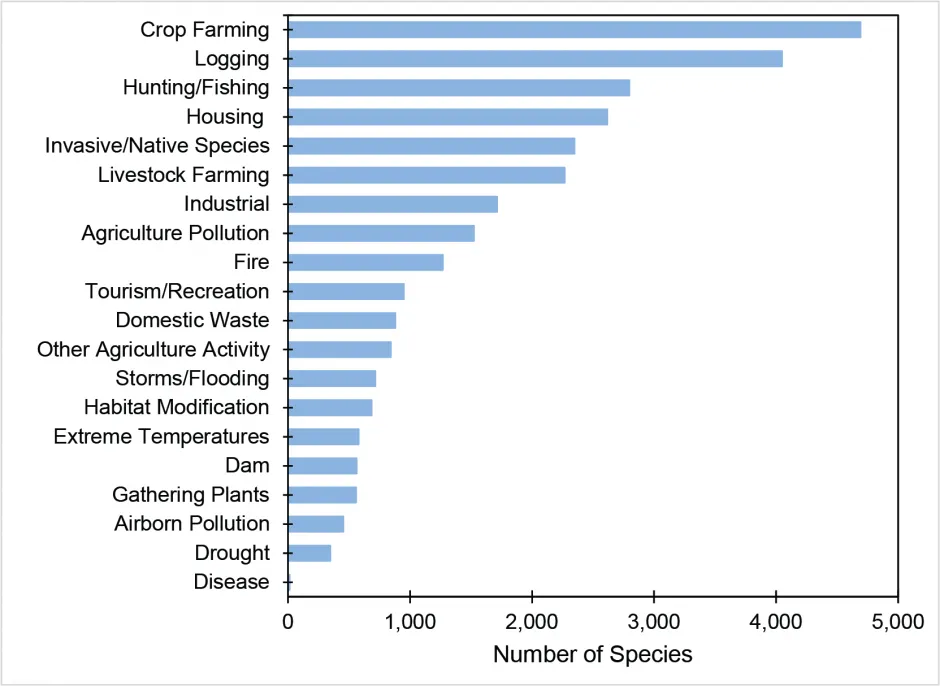
Biodiversity Loss Due to Agriculture (See U.S. Food System Factsheet)
- Seven agricultural commodities (cattle, oil palm, soy, cocoa, rubber, coffee, wood fiber) accounted for 26% of global tree cover lost from 2001-2015, replacing 71.9 Mha of forest.18
- Of the 30 mammalian and bird species used extensively for agriculture, half account for over 90% of global livestock production.19
- Genetic diversity within breeds is declining, and 24% of 8,803 livestock breeds identified are classified as at risk of disappearing.20
- Of 30,000 wild and 7,000 cultivated edible plants, 30 provide 95% of dietary energy. Wheat, rice, and maize provide >50% of plant-derived calories, globally.21
- Between 1900 - 2000, around 75% of the genetic diversity of agricultural crops was lost.22
- Productivity, stability, ecosystem services, and resilience are positively associated with species diversity in agricultural ecosystems.23
Extinction
- In Earth’s history, there have been five mass extinctions, defined as time periods where extinction rates accelerate relative to origination rates such that over 75% of species disappear over an interval of 2 million years or less.24
- Globally, 1% or less of the species within most assessed taxa are extinct. However, 20-43% of species in these taxa are labeled as threatened.24
- Globally, there has been an average 69% decline in the relative abundance of monitored wildlife populations since 1970.25
- As of 2022, 208 plant and animal species have gone extinct in the U.S. and 2,288 are threatened or endangered.6,26
- Current extinction rates are higher than those leading to the five mass extinctions and could reach mass extinction magnitude in 300 years.24
- Up to 1 million species may be threatened with extinction in coming decades.27
Federally Listed Endangered Species by Taxonomic Group13
Image
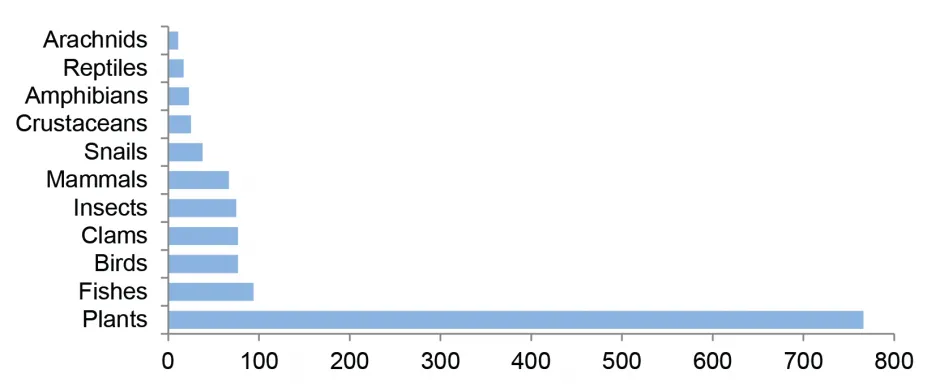
Sustainable Actions
Policy
- Examples of treaties to protect species include: The Convention on Wetlands of International Importance (1971), The Convention of International Trade in Endangered Species (CITES) (1973), and the Convention on Biological Diversity (CBD) (1992).28
- The Endangered Species Act (ESA) (1973), administered by the Interior Department’s Fish and Wildlife Service and the Commerce Department’s National Marine Fisheries Service, aims to protect and recover imperiled species and the ecosystems they depend on.29
- As of 2023, 194 countries have National Biodiversity Strategic Action Plans for the conservation and sustainable use of biological diversity.30
- Globally, over 238,000 protected areas (such as national parks and reserves) have been established, covering nearly 15% of the land and 7.3% of the sea. The size of protected areas is now more than 19 times larger than it was in 1962.31
Global Initiatives
- The United Nations developed a list of Sustainable Development Goals (SDG’s) in 2015 that commit to preserving biodiversity of aquatic and terrestrial organisms, among other things. Fulfilling the SDG’s has the potential to greatly increase biodiversity and its associated benefits.32
- In 2022, the Kunming-Montreal Global Biodiversity Framework was adapted by the Convention on Biological Diversity. It includes 23 targets for reversing habitat and species loss, including protecting 30% of the world’s terrestrial and marine areas by 2030 (“30x30”).33
Cite As
Center for Sustainable Systems, University of Michigan. 2023. "Biodiversity Factsheet." Pub. No. CSS09-08.
References
- United Nations (UN) Treaty Series (1993) Convention on Biological Diversity. Vol. 1760, I-30619.
- Millennium Ecosystem Assessment (2005) Ecosystems and Human Well-being: Biodiversity Synthesis. World Resources Institute, Washington, DC.
- Primack, R. (2010) Essentials of Conservation Biology. Sunderland, MA: Sinauer Associates, Inc.
- Stiling, P. (2015) Ecology: Global Insights & Investigations. New York, NY: McGraw-Hill Education.
- Mora, C., et al. (2011) How Many Species Are There on Earth and in the Ocean? PLoS Biol 9(8): e1001127.
- NatureServe (2023) NatureServe Explorer.
- Strayer, D. and D. Dudgeon (2010) “Freshwater biodiversity conservation: recent progress and future challenges.” Journal of the North American Benthological Society, 29(1): 344-358.
- Daniel, R., et al. (2018) “An inverse latitudinal gradient in speciation rate for marine fishes.” Nature 559: 392–395.
- Daily, G. (1997) Nature’s Services: Societal Dependence on Natural Ecosystems. D.C.: Island Press.
- Cardinale, B., et al. (2012) “Biodiversity loss and its impact on humanity.” Nature 486:59-67.
- UN Environmental Programme (UNEP) (2019) Global Environment Outlook (GEO-6).
- Maxwell, S., Fuller, R., Brooks, T. et al. Biodiversity: The ravages of guns, nets and bulldozers. Nature 536, 143–145 (2016).
- U.S. Fish and Wildlife Service (2023) Listed Species Summary (Boxscore).
- Intergovernmental Panel on Climate Change (IPCC) (2023) Synthesis Report of the IPCC Sixth Assessment Report (AR6) Longer Report.
- Stern, N. (2007) The Stern Review: The Economics of Climate Change. Cambridge Univ. Press.
- United Nations Environment Programme (2021) Deforestation Factsheet.
- Pinsky, M. & S. Palumbi (2014). Meta-analysis reveals lower genetic diversity in overfished populations. Molecular Ecology 23:29-39.
- World Resources Institute (2021) “Just 7 Commodities Replaced an Area of Forest Twice the Size of Germany Between 2001 and 2015.”
- Food and Agriculture Organization of the United Nations (UN FAO) (2006) The Role of Biotechnology in Exploring and Protecting Agricultural Genetic Resources.
- UN FAO (2019) The State of the World’s Biodiversity for Food and Agriculture.
- UN FAO (1997) State of the World’s Plant Genetic Resources for Food and Agriculture.
- UN FAO (2004) Building on Gender, Agrobiodiversity and Local Knowledge.
- Khoury, C., et al. (2014) “Increasing homogeneity in global food supplies and the implications for food security.” Proceedings of the National Academy of Sciences, 111(11), 4001–4006.
- Barnosky, A., et al. (2011) “Has the Earth’s sixth mass extinction already arrived?” Nature 471:51–57.
- World Wide Fund for Nature (2022) Living Planet Report: Building a Nature Positive Society.
- U.S. Fish & Wildlife Services (2023) “All Threatened & Endangered Animals & Plants.”
- Intergovernmental Science-Policy Platform on Biodiversity and Ecosystem Services (IPBES) (2019) “Summary for policymakers of the global assessment report on biodiversity and ecosystem services.”
- Pearce, D. (2007) “Do we really care about biodiversity?” Environmental and Resource Economics, 7 (1): 313-333.
- U.S. Fish and Wildlife Service (2017) 40 Years of Conserving Endangered Species.
- UNEP (2023) “National Biodiversity Strategies and Action Plans (NBSAPs).”
- UNEP (2018) “List of Protected Areas.”
- United Nations (2021) “The 17 Goals.” 33.
- The Nature Conservancy (2023) “30x30: How Do We Enhance Area-Based Conservation.”
